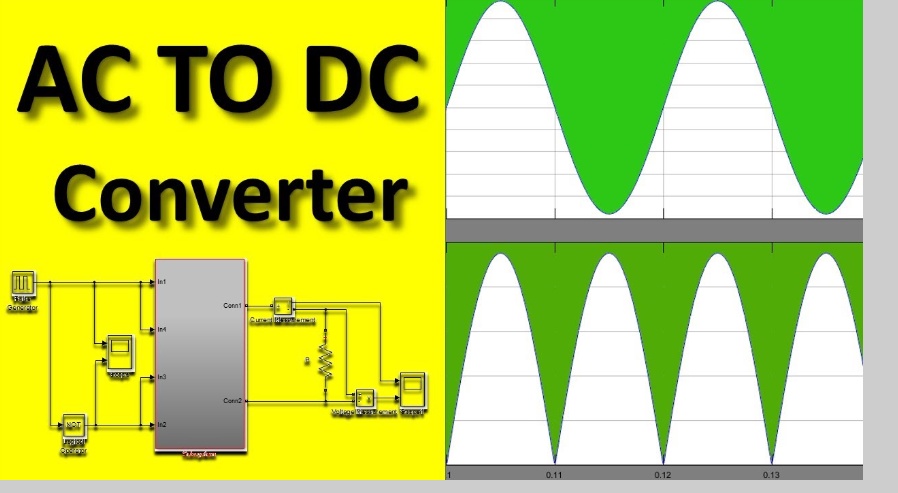Introduction
The world of electrical engineering and electronics revolves around the fundamental concepts of alternating current (AC) and direct current (DC). AC is the type of electricity generated by power plants and used in our homes, while DC is the type of electricity found in batteries and commonly used in electronic devices. To bridge the gap between these two forms of electricity, AC to DC converters, often referred to simply as "rectifiers," play a crucial role. In this article, we will delve into the world of AC to DC converters, exploring their importance, working principles, types, and applications.
The Significance of AC to DC Conversion
Before we dive into the details of AC-to-DC converters, let's understand why the conversion between AC and DC is essential. AC and DC power have distinct characteristics, and each serves specific purposes:
-
AC Power: Alternating current is characterized by its periodic oscillation, where the direction of current flow continuously reverses. This feature makes it ideal for long-distance power transmission, as it can be easily transformed to different voltage levels using transformers. AC power is commonly used for electricity distribution in homes, industries, and power grids.
-
DC Power: Direct current, on the other hand, flows in a constant direction without any reversals. It is typically used in electronic devices and systems, including computers, smartphones, and automotive applications. Batteries are a primary source of DC power.
However, many electronic devices and components require DC power, even when the available power source is AC. This is where AC to DC converters come into play. They facilitate the transformation of AC voltage into a suitable DC voltage, ensuring that our electronic gadgets and appliances receive the right type of power.
Working Principles of AC to DC Converters
AC to DC converters operate on the principle of rectification, which involves converting the alternating voltage waveform of AC power into a unidirectional (DC) voltage waveform. The key components involved in this process are diodes. Here's how it works:
-
Diodes: Diodes are semiconductor devices that allow current to flow in one direction while blocking it in the reverse direction. In an AC to DC converter, diodes are arranged in a specific configuration called a rectifier circuit.
-
Half-Wave Rectification: In a half-wave rectifier circuit, only one half of the AC waveform is allowed to pass through, resulting in a pulsating DC output. This type of rectification is simple but less efficient.
-
Full-Wave Rectification: Full-wave rectification is more efficient and produces a smoother DC output. It utilizes a bridge rectifier circuit, consisting of four diodes, to convert both halves of the AC waveform into a unidirectional DC waveform.
-
Filtering: To further smooth the output, a filter circuit, often composed of capacitors and inductors, is used to remove any remaining AC ripples, resulting in a nearly pure DC output.
Types of AC to DC Converters
AC to DC converters come in various configurations and designs, each tailored to specific requirements. Here are some common types:
-
Linear Power Supplies: Linear power supplies use a transformer to step down the voltage, followed by a rectifier and filter to convert AC to DC. They are simple and produce low-noise output but are less energy-efficient.
-
Switched-Mode Power Supplies (SMPS): SMPS converters are highly efficient and compact. They use high-frequency switching to regulate and convert AC to DC. They are commonly found in modern electronic devices.
-
Unregulated and Regulated Power Supplies: Unregulated power supplies provide a fixed DC output, which may vary with input voltage fluctuations. Regulated power supplies maintain a constant output voltage regardless of input variations, making them suitable for sensitive electronics.
-
Wall Adapters: These compact AC to DC converters are used for low-power devices like mobile phone chargers, routers, and small electronics. They are designed for convenience and portability.
Applications of AC to DC Converters
AC to DC converters find application in numerous fields and devices, shaping our modern technological landscape:
-
Consumer Electronics: Most of the electronic gadgets we use daily, such as smartphones, laptops, and televisions, rely on AC to DC converters to operate from AC power sources.
-
Industrial Automation: AC to DC converters are crucial in manufacturing processes, powering control systems, motors, and sensors.
-
Renewable Energy: Solar panels and wind turbines generate DC electricity, which is converted to AC for grid integration using inverters. Conversely, AC to DC converters are used to charge batteries in off-grid or backup systems.
-
Transportation: Electric vehicles (EVs) and hybrid vehicles rely on AC to DC converters to charge their batteries and power various onboard systems.
-
Telecommunications: Telecom equipment requires stable DC power, and AC to DC converters play a pivotal role in providing this.
Conclusion
AC to DC converters, or rectifiers, are indispensable devices that enable the seamless integration of AC and DC power in our modern world. Their versatile applications span across industries and are responsible for powering an array of electronic devices, from our handheld gadgets to large-scale industrial systems.
As technology continues to advance, the development of more efficient and compact AC to DC converters will play a crucial role in improving energy efficiency and reducing environmental impact. These devices will continue to be the invisible workhorses behind the scenes, ensuring that our electronic world runs smoothly, efficiently, and sustainably.


No comments yet